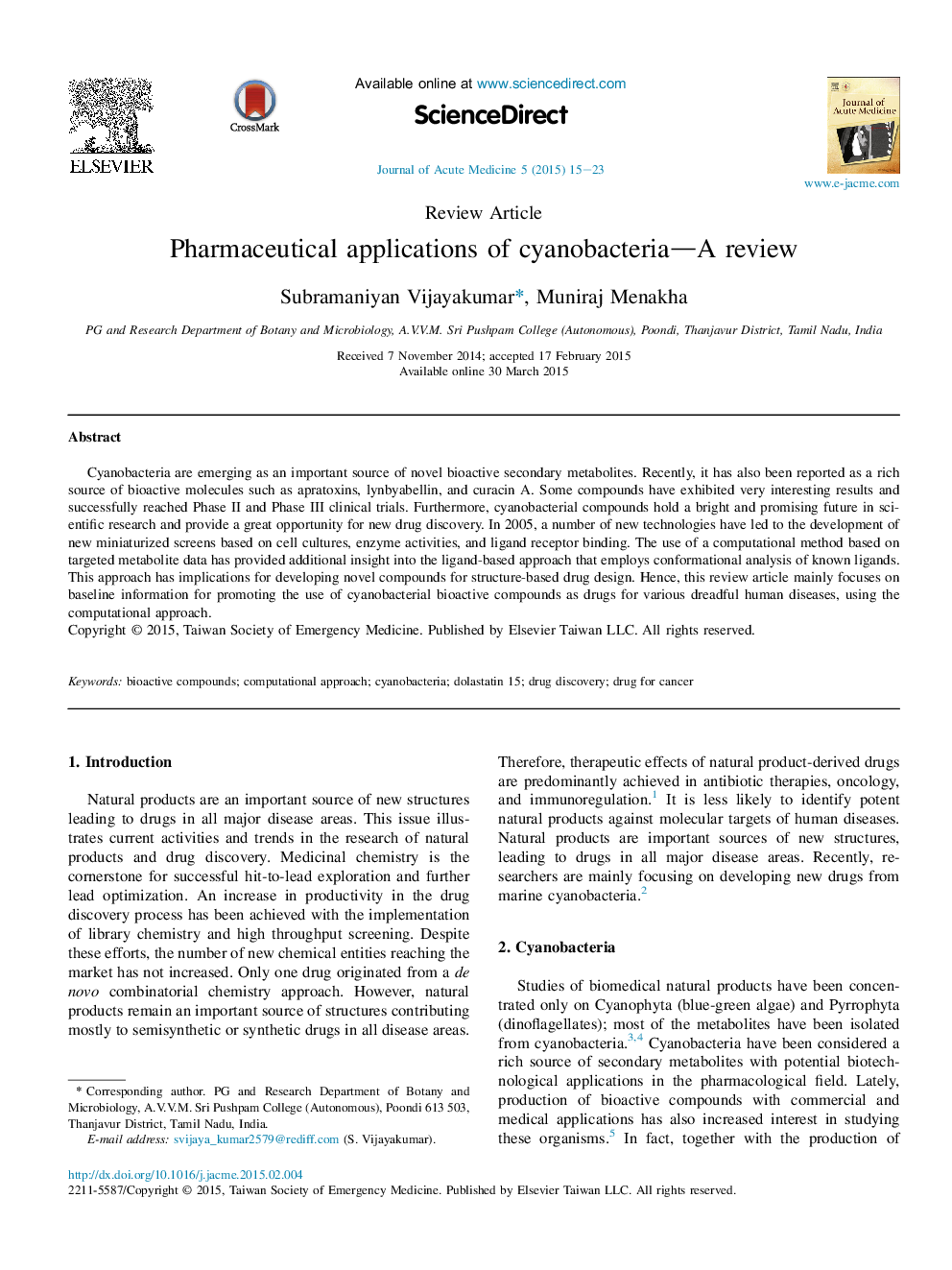| Article ID | Journal | Published Year | Pages | File Type |
|---|---|---|---|---|
| 3244899 | Journal of Acute Medicine | 2015 | 9 Pages |
Cyanobacteria are emerging as an important source of novel bioactive secondary metabolites. Recently, it has also been reported as a rich source of bioactive molecules such as apratoxins, lynbyabellin, and curacin A. Some compounds have exhibited very interesting results and successfully reached Phase II and Phase III clinical trials. Furthermore, cyanobacterial compounds hold a bright and promising future in scientific research and provide a great opportunity for new drug discovery. In 2005, a number of new technologies have led to the development of new miniaturized screens based on cell cultures, enzyme activities, and ligand receptor binding. The use of a computational method based on targeted metabolite data has provided additional insight into the ligand-based approach that employs conformational analysis of known ligands. This approach has implications for developing novel compounds for structure-based drug design. Hence, this review article mainly focuses on baseline information for promoting the use of cyanobacterial bioactive compounds as drugs for various dreadful human diseases, using the computational approach.
